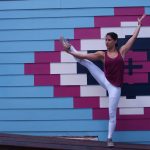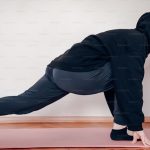Ever wondered how your yoga teacher knows when to breathe in or out as you move through a sequence of poses? Do you know how hard to push that stretch – I mean, how much stretch is a good stretch after all? And what is that ‘microbend’ in knees and elbows all about? I know it all confused me to begin with – knowing when to do what was a bit of a ‘black art’ I thought. But no – there are a few basic rules that can be learnt and applied to any pose or practice.
And getting to grips with a few basic principles opens up a whole new world of yoga opportunities. Home practice becomes SO much less daunting. You might become confident enough to try a Mysore class (where students work through poses at their own pace without instructions from the teacher). Or you might just enjoy your current classes more because you have one less thing to worry about. Wherever you are on your yoga journey, these simple rules really do have the potential to deepen your practice. So, read on to discover some of the best foundations for your yoga practice.
1. INHALE TO BACKBEND
Anytime you are doing backbends or opening the front of the body you are extending the spine and hips. Think bhujańgāsana (cobra) or utthita hastāsana (arms overhead) and notice the stretch at the front of the body. When this is happening the chest is able to expand beautifully too, so taking a deep breath in as you back bend makes sense. Working with the body like this adds value to the extension and expansion combination of the movement – we are simply working with what nature designed us to do. And it feels good!
2. EXHALE TO FOLD
Folding forwards stretches the back of the body and ‘squashes’ the front. Think about uttasāsana (standing forward fold) or janu sirsāsana (head to knee pose). Notice that there is less room in the chest for air as the diaphragm is pressed up under the lungs – basically the abdominal contents are squashed upwards. This makes us naturally breathe out when we bend forward so this basic principle is really easy to get the hang of. Breathing out on forward folds is simply more comfortable than the alternative.
3. EXHALE TO TWIST, INHALE TO RETURN TO CENTRE
This one is partly about space available for air too. As we twist the abdominal contents are squashed and press up under the diaphragm just like in forward folds. So air is naturally pushed out of the lungs as we move into a twist and we are, once again, working with nature here. When we untwist and come back to the centre, our abdominal organs all settle back down taking the pressure away from under the diaphragm and the lungs can fill again. Hence, breathing out to twist and in to return to centre, makes good biological sense.
4. SUKHA VS DUHKHA
Translated from Sanskrit this means ‘comfort vs suffering’. Think of a scale of 0 to 10, where 0 = really comfortable (sukha) and 10 = horrible (duhkha). Then imagine you are awarding a number between 0 and 10 to how comfortable a particular yoga pose is for you as you are doing it. If you are awarding high numbers (maybe 6/10 or over) then you are probably pushing too hard to achieve something that your body is not yet ready to do. On the basis that yoga should never be painful then low numbers are generally better than high numbers so my advice would be to ease off until you are more comfortable. Poses like savasana (corpse pose) or sukhasana (easy pose) need to be really comfortable, ideally scoring 0 or 1, so modify the pose and use props until you can score 0 or 1.
5. HOW MUCH STRETCH IS A GOOD STRETCH?
One of the great joys of yoga is the way it increases flexibility. In fact, many people will start yoga simply to get more mobile. But can you stretch too much? Yes, yes, and yes again – you can definitely stretch too much. Overstretching risks damaging soft tissues and causing injuries. So how do you know when to stop stretching – when to stop pushing?
The answer is simple – listen to your body. Ask yourself a few simple questions. Is the stretch feeling comfortable? If so, good – if not, ease off. Is the stretch increasing or decreasing as I hold the pose? A stretch feeling that is decreasing or staying the same is a good, safe stretch. A stretch feeling that is increasing is a bad and dangerous stretch – ease off! Mild, comfortable stretches that stay the same or decrease when held are the ones that safely and easily increase range of motion in soft tissues. Trust me – they are the ones that you want.
6. MICROBENDS IN KNEES AND ELBOWS
This is also about protecting the soft tissues around the joints. Allowing the knees or elbows to flop into a passive stretch risks injury to the back of the joints. Keeping a microbend activates muscles around the joints and allows the stretching forces to fall on the tissues that can safely lengthen while protecting those that need protecting. The same principle applies to the spine too. Keep the abs activated to prevent the lower back just folding into a hinge in backbends and keep the chin gently pulled towards the chest any time you are looking up activates the right neck muscles – both will protect your spine.
So, next time you are on your mat think about applying these few simple rules and see how your body likes them. Be mindful and work with what nature designed for us – it really does work a treat!













